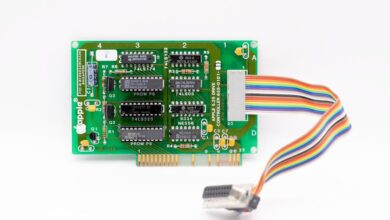The Power of Local LLMs in DataOps

In the bustling world of data, insights are gold, but getting to them often feels like an uphill battle. Data operations, or DataOps, involve a complex dance of cleaning, transforming, and validating information before it can yield any real value. It’s a critical, yet often tedious, process that demands meticulous attention to detail. But what if an AI agent could handle these tasks for you, not just automating the work, but also rigorously verifying its own output? That’s not a distant dream; it’s a tangible reality we’re diving into today.
We’re talking about building a fully self-verifying DataOps AI agent. This isn’t just about throwing a large language model (LLM) at a problem; it’s about engineering a structured workflow where the AI plans, executes, and critically tests its own data manipulations. And here’s the kicker: we’re doing it all locally, leveraging the power of Hugging Face models like Microsoft’s Phi-2, ensuring privacy, efficiency, and reproducibility without a single API call to external services.
The Power of Local LLMs in DataOps
Before we dissect our agent, let’s talk about the “why” behind local LLMs. In an age where data privacy and security are paramount, sending sensitive operational data to third-party cloud-based LLM APIs can be a non-starter for many organizations. This is where models like Microsoft’s Phi-2, when run locally, truly shine. They offer the intelligence of larger models for specific tasks, but within your controlled environment.
Running Phi-2 locally on platforms like Google Colab (even on CPU, though GPU is faster) demonstrates that sophisticated AI-driven automation isn’t exclusive to those with massive cloud budgets. It democratizes access to advanced capabilities, allowing developers and data professionals to experiment, build, and deploy intelligent agents without worrying about data egress fees or compliance hurdles. We kick things off by setting up our local environment, ensuring that our chosen LLM is ready to think and reason on our terms.
Setting Up Our Local AI Brain
Our journey begins with setting up the foundational intelligence: a LocalLLM class. This class is designed to load models like Phi-2 using Hugging Face Transformers. It handles tokenization, model loading, and even optional quantization to make the model run efficiently, whether you’re using a beefy GPU or a more modest CPU setup.
Crucially, it provides a straightforward generate method. This is our direct line to the model’s reasoning capabilities, allowing us to feed it prompts and receive structured responses. By keeping this core component local, we lay the groundwork for a truly private and controllable DataOps agent.
Deconstructing the DataOps Agent: A Three-Phase Workflow
The magic of our DataOps AI agent lies in its multi-faceted design. We’ve endowed it with three distinct, intelligent roles, each with a specialized prompt and responsibility: the Planner, the Executor, and the Tester. Think of it as a highly efficient, self-managing data team, all contained within one AI entity.
Phase 1: The Planner – Architecting the Strategy
Every successful data operation starts with a clear plan. Our Planner agent takes a high-level task and information about the available data, then generates a detailed execution strategy. This isn’t just a list of steps; it’s a structured JSON output that includes:
- A sequence of logical steps to achieve the task.
- A description of the expected output.
- Crucially, a set of explicit validation criteria to determine success.
This phase is where the agent demonstrates its strategic thinking, breaking down complex requests into actionable, verifiable components. It’s like having an experienced data architect outlining the entire project before a single line of code is written.
Phase 2: The Executor – Bringing the Plan to Life
With a solid plan in hand, it’s time for action. The Executor agent’s role is to translate the Planner’s strategy into executable Python code, specifically leveraging the powerful pandas library. Given the detailed steps from the plan and the context of the available data (typically a DataFrame), the Executor writes the necessary scripts.
The code generated by the Executor is clean, focused, and designed to produce a final result stored in a designated variable. This is where the AI truly flexes its coding muscles, demonstrating its ability to understand data manipulation tasks and generate functional, production-ready snippets that can be run directly within our environment. It’s a remarkable step towards truly automated data engineering.
Phase 3: The Tester – The Ultimate Quality Gate
Automation is only as good as its reliability. This is why the Testing and Verification phase is arguably the most critical. Our Tester agent takes the output from the Executor (or any execution errors) and rigorously evaluates it against the validation criteria established by the Planner. It doesn’t just assume success; it actively seeks to confirm it.
The Tester produces a JSON output indicating whether the task passed, any issues it found, and even recommendations for improvement or further investigation. This self-verification loop is what makes our agent robust. It ensures that the results aren’t just generated, but are also accurate, consistent, and meet the predefined expectations. Imagine a QA engineer who is always on standby, ready to scrutinize every output and report back instantly.
Orchestrating the Symphony: A Unified, Self-Verifying Pipeline
Individually, each role is powerful, but their true strength emerges when they are seamlessly integrated into a single, self-verifying pipeline. Our DataOpsAgent orchestrates this entire process. You simply provide a task and your DataFrame, and the agent takes over.
First, it plans. Then, it executes the generated code using Python’s exec() function within a controlled local scope, meticulously handling any potential errors that might arise during execution. Finally, it tests, providing a comprehensive report on the outcome. This end-to-end automation, all powered by a local LLM, means complex data processing tasks can be initiated with minimal human intervention, from strategy to verified outcome.
To put this into perspective, we’ve demonstrated this agent with practical examples: aggregating sales data by product and analyzing customer spend by age group. In both cases, the agent autonomously navigates from understanding the task to delivering a verified result, showcasing its versatility and reliability for common DataOps challenges. The beauty lies in seeing the agent transition from a high-level goal to actionable code and then to a confident affirmation of its own work.
Conclusion: The Future is Autonomous and Verified
What we’ve explored today is more than just a proof of concept; it’s a blueprint for the next generation of data operations. By building a self-verifying AI agent powered by local Hugging Face models like Phi-2, we’ve shown that truly autonomous and privacy-preserving data processing is not only possible but also incredibly practical. This architecture eliminates the need for external API calls, keeping sensitive data secure while still benefiting from advanced AI capabilities.
The synergy between the Planner, Executor, and Tester roles creates a robust system capable of handling complex data tasks with an unprecedented level of automation and reliability. This isn’t just about making DataOps faster; it’s about making it smarter, more trustworthy, and inherently more efficient. As we look ahead, imagine expanding this framework to include more sophisticated validation, multi-agent collaborations, or even self-correcting loops – the possibilities for autonomous data systems are truly exciting and just beginning to unfold.





